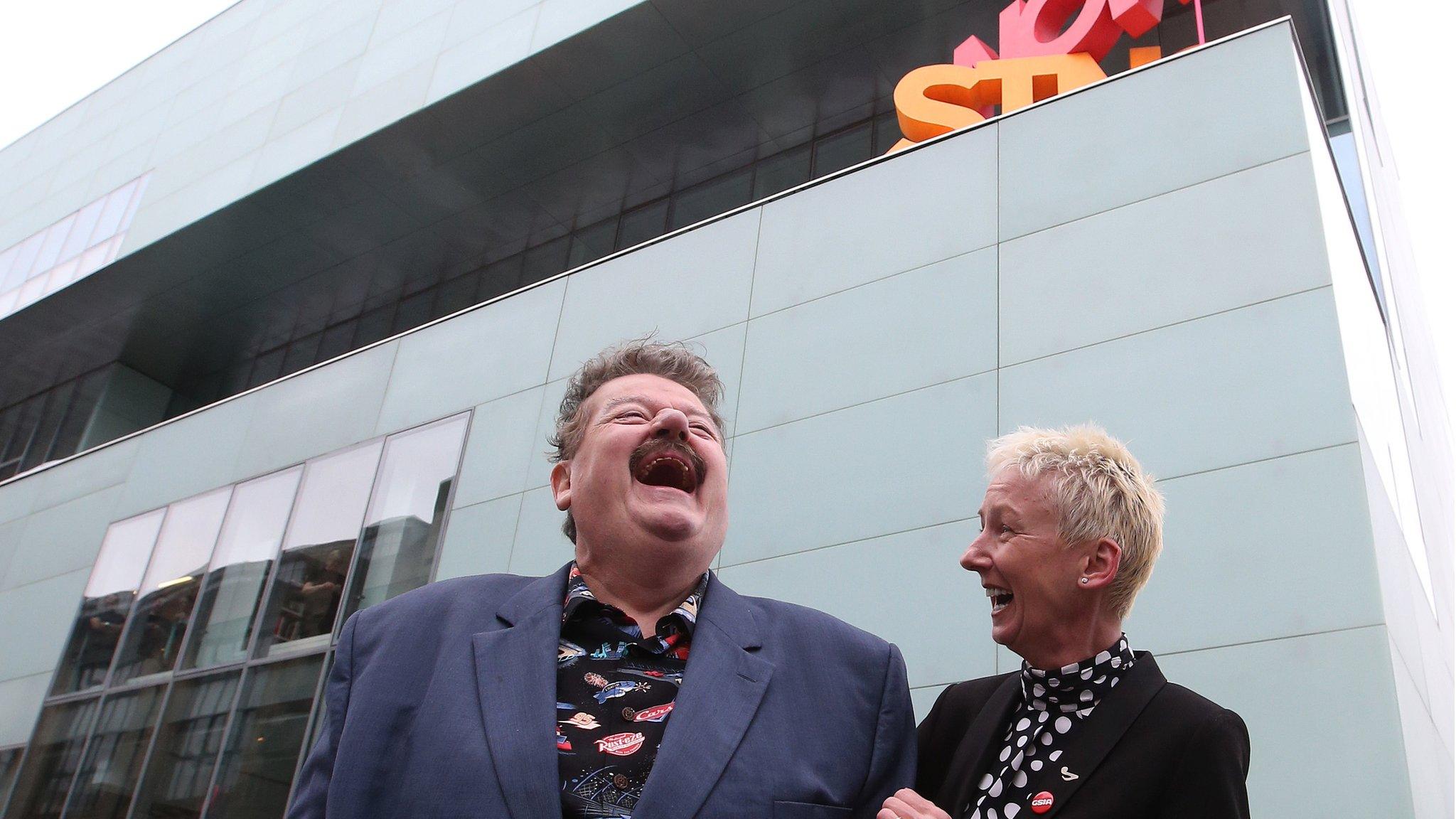Living up to a Charles Rennie Mackintosh classic
- Published
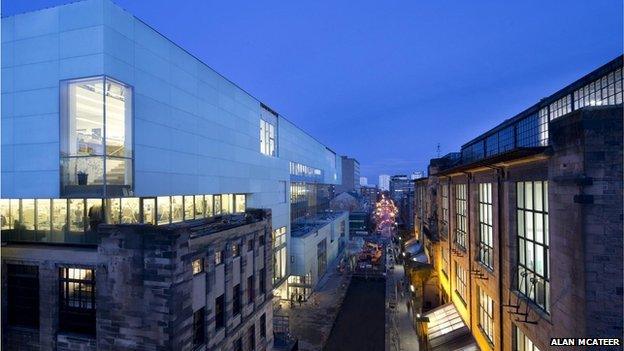
The new Glasgow School of Art building is being officially opened across the road from Charles Rennie Mackintosh's masterpiece.
The Reid Building sits facing Rennie Mackintosh's famous 1909 landmark.
Designed by US architect Steven Holl, the new £30m building - which is part of a £50m project - replaces a 1970s concrete tower block.
It will bring the departments of design together under one roof, along with a new lecture theatre, workshops, canteen and staff offices.
Charles Rennie Mackintosh was a 28-year-old junior draughtsman at a Glasgow architecture firm when he drew up the designs for the building that many consider his masterpiece.
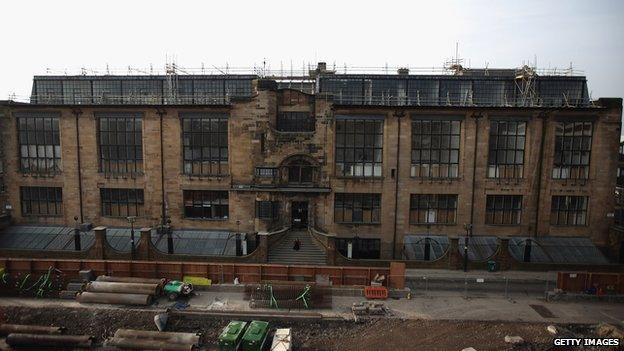
When the old building across the street was demolished in 2012 it was possible to photograph the full Mackintosh school of art for the first time in decades.
The dramatic art nouveau design of the Glasgow School of Art building in the Garnethill area of the city centre took another 12 years to be completed, finally opening in 1909, but it heralded the birth of a new style in 20th Century European architecture.
It is now considered one of Scotland's most admired and influential buildings and Mackintosh, under-appreciated in his own time, is lauded as one of the country's finest designers.
The task of designing a 21st Century building to sit on the opposite side of Renfrew Street to Rennie Mackintosh's masterpiece went to Steven Holl, along with local practice JM Architects.
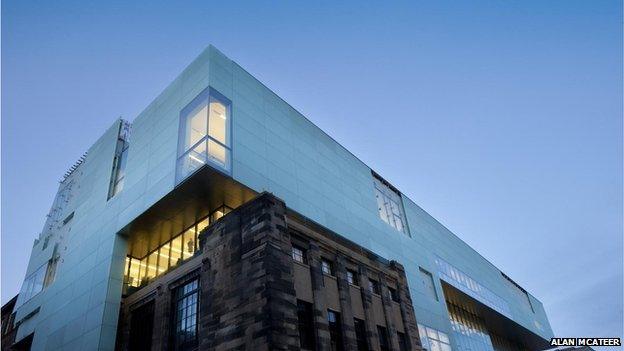
The new building incorporates the old Assembly building part of the school of art
Its design has proved controversial, with The Architectural Heritage Society for Scotland branding it "alien" and questioning the "use of large unrelieved stretches of grey opaque glass".
New York-based Holl, 66, won the 2010 competition to design new 11,000 sq ft accommodation for the art school's design department.
The building, which will house about 800 students, is named in honour of the art school's former director, Seona Reid.
It extends for the same length as its illustrious neighbour, so the temptation to compare them is very great.
Holl has described his approach as "complementary contrast".
He said he wanted to do the opposite of everything Mackintosh did.
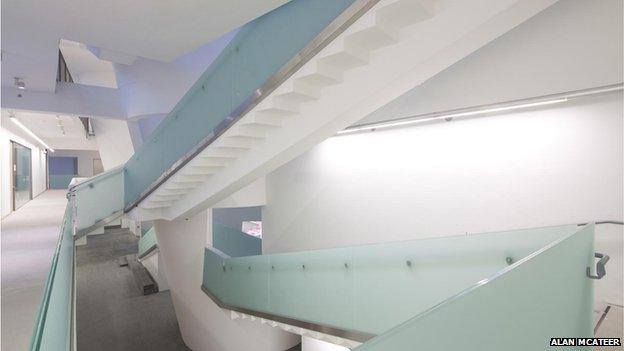
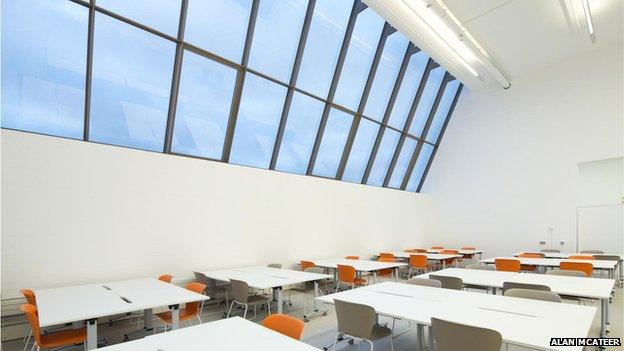
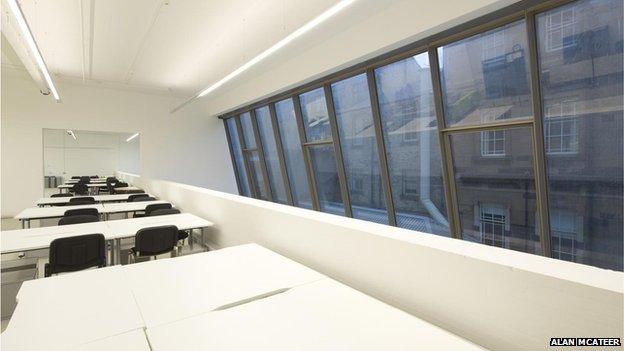

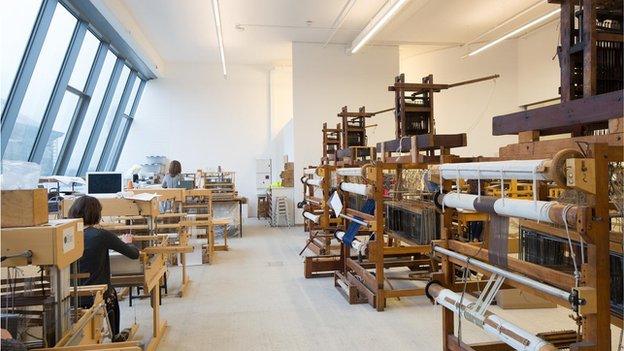
Whereas Mackintosh has thick sandstone, Holl has developed a thin skin entirely of glass, which he hopes will pick up the light.
Mackintosh worked with detail and ornament and Holl uses modern techniques of glass-making.
Inside studios and social spaces have large areas of unobstructed window.
As well as that, translucent glass has been extended over all external walls and forms a second layer to a number of windows.

The Foulis building and Newberry tower were demolished before the new building was put up
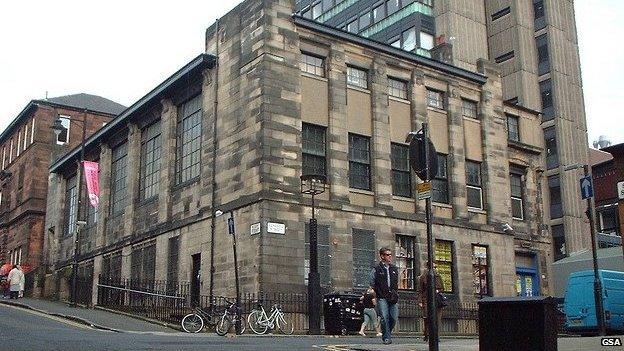
The Assembly building was incorporated into the new Reid Building
Famous Glasgow School of Art graduates includes Dr Who actor Peter Capaldi and Harry Potter actor Robbie Coltrane, as well as novelist and muralist Alasdair Gray.
Artist Peter Howson and Scotland's national poet Liz Lochhead attended the school as well as Fran Healy and Dougie Payne from Glasgow band Travis and members of Franz Ferdinand.
In recent years, Glasgow School of Art has produced many of the UK's leading contemporary artists such as Douglas Gordon and David Shrigley and three recent Turner Prize winners: Simon Starling in 2005, Richard Wright in 2009 and Martin Boyce in 2011.
- Published9 April 2014
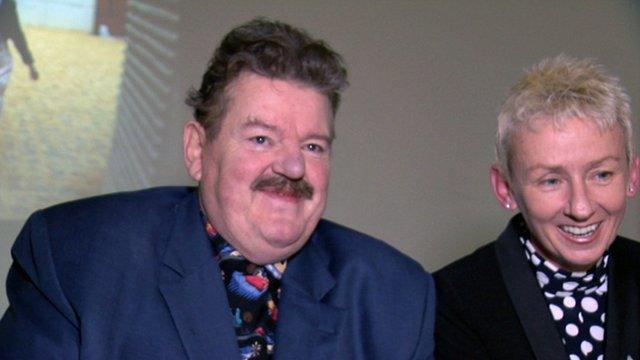
- Published9 April 2014
